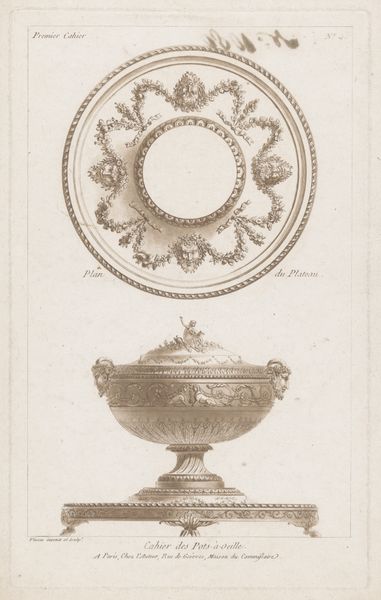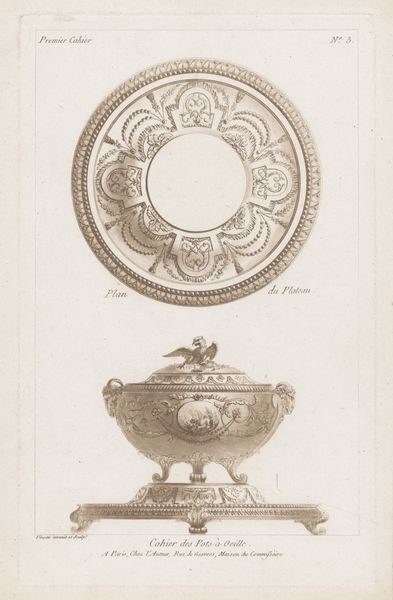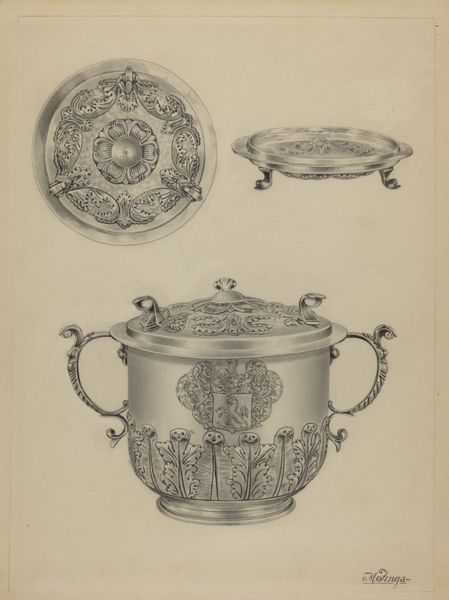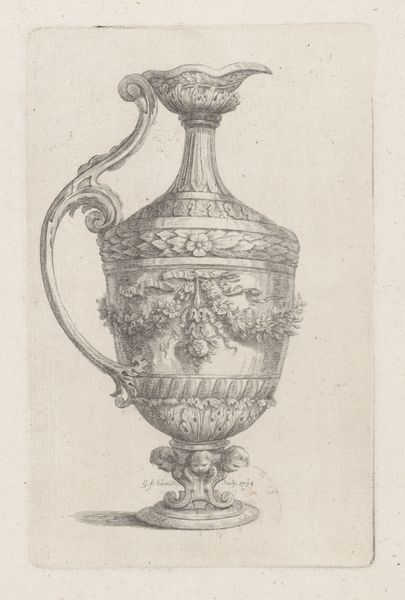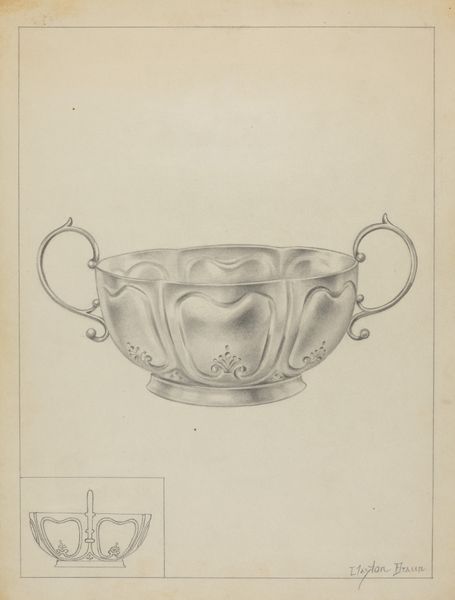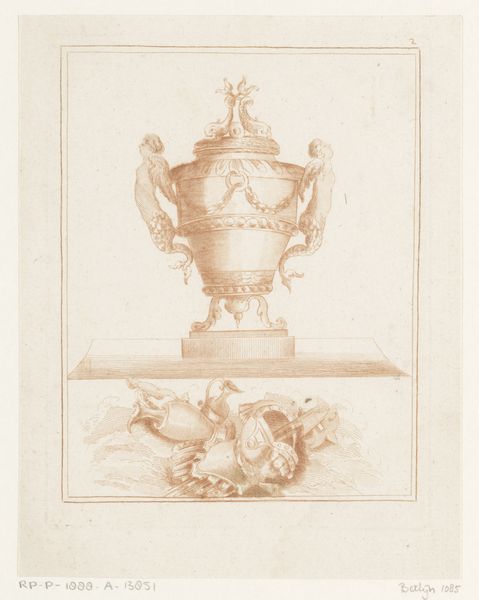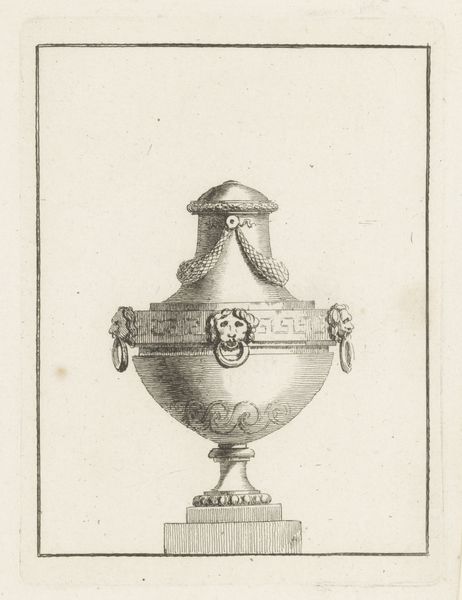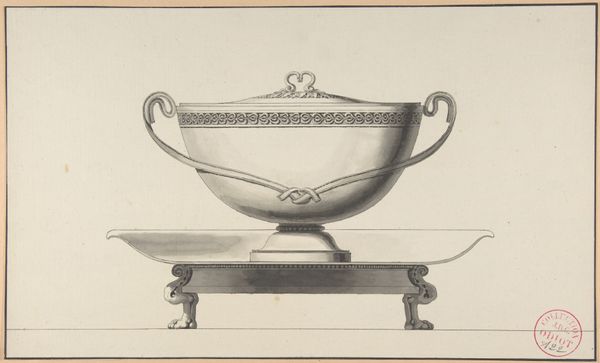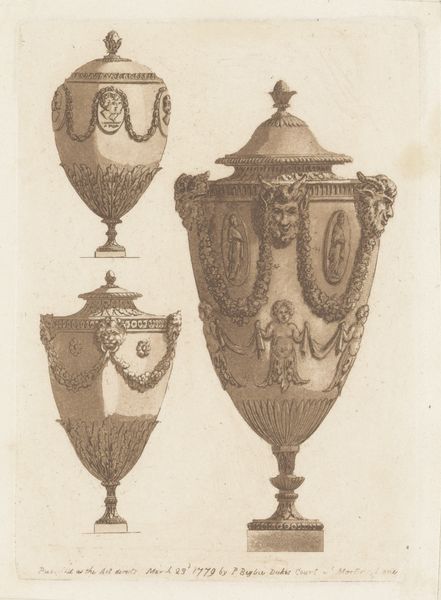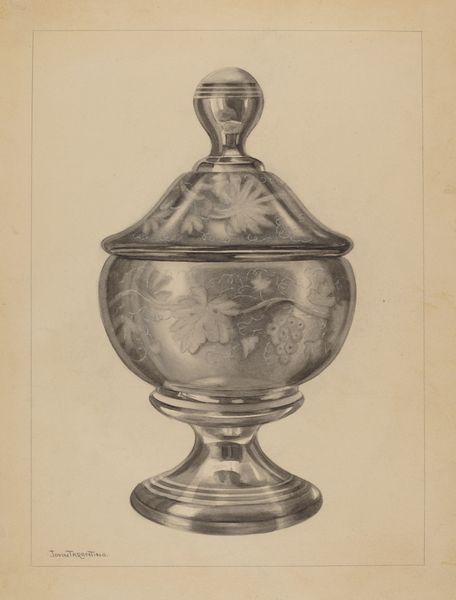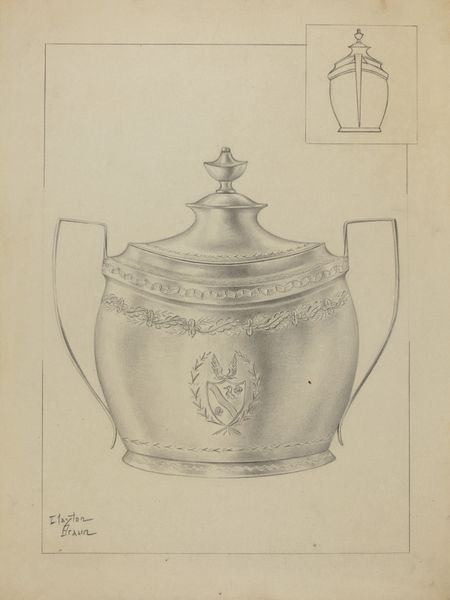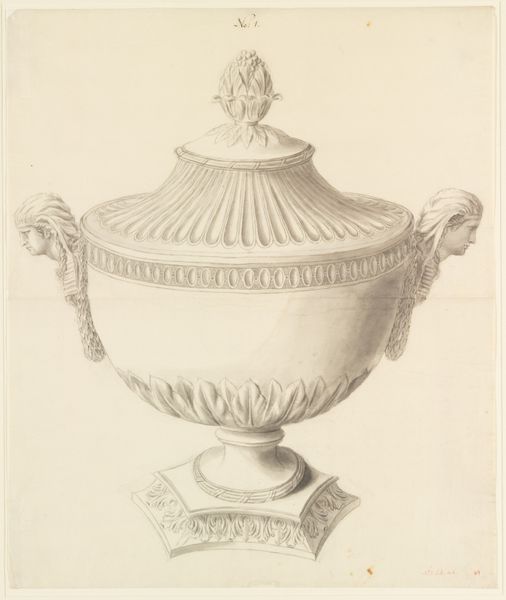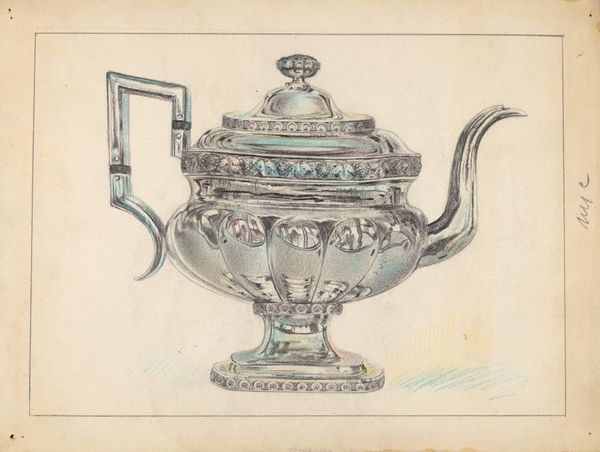
Dimensions: height 303 mm, width 187 mm
Copyright: Rijks Museum: Open Domain
Curator: This engraving, titled "Terrine met ranken," dates from somewhere between 1759 and 1800. Editor: The meticulousness of the baroque style comes through so clearly. I see echoes of a pre-revolutionary court, a life of luxury and leisure. What do you make of this display of opulence? Curator: Indeed, the artist, Claude Dominique Vinsac, seems intent on showcasing elite tastes, producing what feels like a commercial plate meant to circulate and inspire further consumption. We have to understand how engravers and designers helped drive the decorative art trade. Editor: These designs always strike me as exclusionary. Think about the labor, both creative and material, involved in objects that would have been completely out of reach for most people in the 18th century. How was art deployed to reflect and preserve hierarchical distinctions? Curator: That's a valid point, but remember prints like these disseminated design ideas widely. Artisans adapted patterns; engravings were never purely top-down. Though destined for an elite consumer, the baroque aesthetic itself was transformed through workshops, guilds, and a public fascinated with fashion. Editor: Yet, is access enough to neutralize art's role in crafting societal stratification? The piece certainly evokes inequality: I am more concerned with how they perpetuate existing power imbalances within that society, than if this plate allowed lower society access or not. Curator: It's crucial to study both how art upholds power and inspires resistance to it. Prints also acted as sources for artists themselves. A complex interplay between creative agency, labor, and socioeconomic context informed these objects, and, arguably, does so now. Editor: Perhaps reflecting on "Terrine met ranken," as a luxury object provides a lesson: that questioning social hierarchy, while enjoying aesthetic refinement is permissible and can lead to unexpected interpretations about access, or even the limitations, and influence. Curator: Well said. This piece demonstrates the tensions between aesthetics and power. A tension we still feel today.
Comments
No comments
Be the first to comment and join the conversation on the ultimate creative platform.
